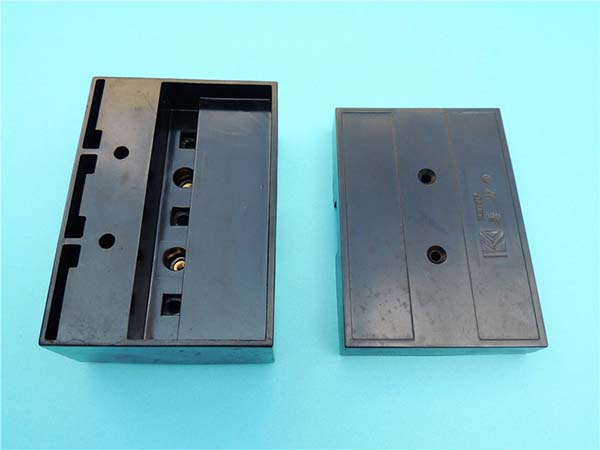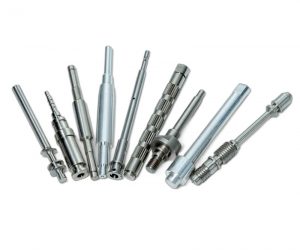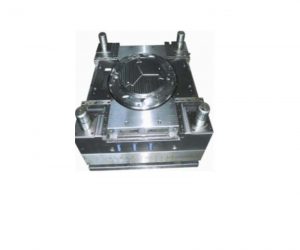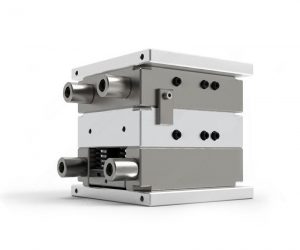1. Introduction: The Duality of Modern Manufacturing
In the dynamic landscape of modern manufacturing, Fabricación aditiva (AM) and Fabricación por usinado (SM) stand as two fundamental pillars, each with its own unique set of characteristics, capabilities, and applications. These two manufacturing paradigms have been at the forefront of industrial innovation, revolutionizing the way products are designed, prototyped, and produced across a wide range of industries.
Fabricación aditiva, commonly known as 3D printing, is a revolutionary technology that builds three - dimensional objects layer by layer from a digital model. This process starts with a CAD (Computer - Aided Design) file, which is sliced into thin cross - sectional layers. The AM machine then deposits materials, such as plastics, metals, ceramics, or composites, in a precise pattern according to the digital instructions, gradually building up the object. This layer - by - layer construction method allows for the creation of highly complex geometries that were previously extremely difficult or even impossible to achieve with traditional manufacturing techniques.
Por otro lado, Fabricación por usinado is a more traditional approach that involves removing material from a larger workpiece to create the desired shape. Processes like milling, turning, drilling, and grinding are typical examples of subtractive manufacturing. A block of raw material, such as metal, plastic, or wood, is gradually shaped through the use of cutting tools, with the excess material being removed until the final product specifications are met. This method has been the mainstay of manufacturing for centuries and is well - established in industries where high - precision and high - volume production are required.
The comparison between additive and subtractive manufacturing is not just about contrasting two different techniques; it is about understanding how they can be best utilized to meet the diverse and evolving needs of modern industries. For engineers, designers, and manufacturing decision - makers, having a comprehensive understanding of the strengths and limitations of each method is crucial for making informed choices in product development, production planning, and supply chain management. Yigu Technology delves deep into the technical aspects, applications, cost - effectiveness, and future prospects of both additive and subtractive manufacturing, aiming to provide valuable insights and practical guidance for those involved in the manufacturing ecosystem.
2. Core Process Comparison
2.1 Additive Manufacturing: The Layered Revolution
Additive Manufacturing is a revolutionary approach that builds objects layer by layer, following a digital model. This technique has opened up new possibilities for creating complex geometries that were previously unfeasible with traditional manufacturing methods.
One of the most well - known AM technologies is Selective Laser Sintering (SLS). In SLS, a high - power laser is used to sinter powdered materials, such as plastics or metals, together. The laser selectively fuses the powder particles according to the cross - sectional shape of each layer in the digital model. This process allows for the creation of parts with intricate internal structures, like lattice patterns, which can significantly reduce the weight of a component while maintaining its strength. For example, in the aerospace industry, SLS - produced components can reduce weight by up to 30% compared to their traditionally manufactured counterparts, as reported by GE Aviation in 2023. This weight reduction not only improves fuel efficiency but also enables the design of more innovative and high - performance aircraft parts.
The layer - by - layer nature of AM also enables the integration of multiple materials within a single part. Some advanced AM machines can deposit different materials simultaneously or in sequence, creating parts with tailored properties. For example, a part could have a rigid outer shell made of one material and a flexible inner core made of another, providing both structural integrity and flexibility in a single component.
2.2 Subtractive Manufacturing: Precision Through Material Removal
Subtractive Manufacturing, on the other hand, is a more traditional approach that involves removing material from a larger workpiece to create the desired shape. Computer Numerical Control (CNC) milling y turning are two of the most common subtractive processes.
CNC milling uses rotary cutting tools to remove material from a workpiece. The cutting tool moves in multiple axes (usually three to five axes in modern CNC machines), allowing for the creation of complex 3D shapes. This process can achieve extremely tight tolerances, often within ±0.01mm. For applications in the medical and aerospace industries, where precision is crucial, CNC milling is the go - to process. For Yigu Technology example, in the production of orthopedic implants made from titanium alloys, CNC milling can create the intricate shapes required for a perfect fit within the human body while maintaining the high - quality surface finish (Ra < 0.8μm) necessary for biocompatibility.
CNC turning is mainly used for creating cylindrical parts. The workpiece rotates on a spindle, and a cutting tool moves along the length and radius of the workpiece to remove material and shape it into the desired form. Similar to CNC milling, turning can also achieve high precision and excellent surface finishes. It is commonly used in the automotive industry for manufacturing engine components, such as crankshafts and camshafts, where the precise dimensions and surface quality are critical for the engine's performance and durability.
However, subtractive manufacturing has its drawbacks. One of the major issues is the high amount of material waste generated. Depending on the complexity of the part, subtractive processes can generate 30 - 70% material waste. For example, when manufacturing a complex aerospace component from a solid block of metal, a significant portion of the initial material is removed during the machining process, which not only increases the cost of raw materials but also has environmental implications. This high waste factor makes subtractive manufacturing less sustainable for large - scale production, especially when dealing with expensive or scarce materials.
3. Technical Parameter Comparison
A detailed comparison of the technical parameters between additive and subtractive manufacturing can provide a more in - depth understanding of their capabilities and limitations. The following Yigu Technology table summarizes some key technical parameters:
| Parameter | Fabricación aditiva | Fabricación por usinado |
| Material Utilization | 85–95% | 30–70% |
| Tolerance Range | ±0.05–0.1mm | ±0.01–0.05mm |
| Surface Finish (Ra) | 5–20μm | 0.4–1.6μm |
| Complexity Handling | Internal channels/topology | Simple to moderate shapes |
| Lead Time (Prototyping) | 1–3 days | 5–10 days |
3.1 Material Utilization
Yigu Technology Additive Manufacturing has a distinct advantage in material utilization. Since it builds objects layer by layer, adding material only where it is needed, it can achieve a material utilization rate of 85 - 95%. For example, in the production of a custom - designed metal bracket using Direct Metal Laser Sintering (DMLS), a type of AM process, the powder - based material is precisely fused, leaving very little waste.
In contrast, subtractive manufacturing processes typically have a much lower material utilization rate, ranging from 30 - 70%. When manufacturing a part from a solid block of material, a significant amount of the original material is removed as waste during the machining process. For instance, when machining a complex aluminum alloy part in a CNC milling operation, large chips of aluminum are generated, which are discarded, resulting in a relatively low material utilization rate. High - end CNC machines in the aerospace industry, which often work with expensive titanium alloys, still struggle to achieve a material utilization rate above 70% for complex parts.
3.2 Tolerance Range
Subtractive manufacturing is generally known for its high precision, with a tolerance range of ±0.01 - 0.05mm. CNC machining centers equipped with advanced control systems and high - quality cutting tools can achieve extremely tight tolerances. In the production of optical components, such as lenses for high - end cameras, the tolerance requirements can be as strict as ±0.01mm, and subtractive manufacturing processes can meet these demands.
Yigu Technology Additive Manufacturing, while improving in precision, typically has a larger tolerance range of ±0.05 - 0.1mm. The layer - by - layer construction method and the physical properties of the materials used in AM can introduce some variability in the final dimensions. However, with the continuous development of AM technology, some high - end AM machines are now capable of achieving tolerances closer to those of subtractive manufacturing in certain applications. For example, some metal AM systems used in the medical implant industry can achieve tolerances within ±0.05mm for critical features, meeting the strict requirements for implant - patient fit.
3.3 Surface Finish
Subtractive manufacturing can achieve excellent surface finishes, with a roughness average (Ra) value typically ranging from 0.4 - 1.6μm. Through processes like precision grinding and polishing, the surface of the workpiece can be made extremely smooth. In the production of luxury watch components, where aesthetics and functionality are both crucial, subtractive manufacturing techniques can create surfaces with an Ra value as low as 0.4μm, providing a mirror - like finish.
Additive Manufacturing usually has a rougher surface finish, with an Ra value in the range of 5 - 20μm. The layer - by - layer deposition leaves visible layer lines on the surface of the printed object. Although post - processing techniques such as sanding, polishing, and chemical vapor smoothing can improve the surface finish, it often requires additional steps and costs. For example, in FDM - printed plastic parts, the layer lines are clearly visible, and post - processing is usually necessary to achieve a more presentable surface for applications where appearance matters.
3.4 Complexity Handling
Additive Manufacturing excels in handling complex geometries. It can create parts with internal channels, lattice structures, and complex topologies that are almost impossible to produce using subtractive methods without significant difficulty and cost. For example, in the aerospace industry, AM is used to manufacture engine components with internal cooling channels that are designed to optimize heat dissipation. These channels have complex shapes and intersecting paths, which can be easily created through AM but would require multiple complex machining operations and potentially assembly steps if made using subtractive methods.
Subtractive manufacturing is better suited for creating simple to moderately complex shapes. While it can produce complex parts, the process becomes increasingly challenging and costly as the complexity increases. For example, creating a part with multiple internal cavities and intricate details using subtractive methods may require the use of multiple specialized cutting tools, complex fixturing, and a large number of machining operations, which can increase the manufacturing time and cost significantly.
3.5 Lead Time (Prototyping)
For prototyping, additive manufacturing has a significant advantage in terms of lead time. It can produce a prototype in 1 - 3 days. Designers can quickly convert a digital model into a physical prototype, allowing for rapid design iterations. For example, in a product design startup, when developing a new consumer electronic device, an AM - printed prototype can be ready within 24 hours, enabling the team to quickly test the form factor, ergonomics, and basic functionality of the product.
Subtractive manufacturing generally has a longer lead time for prototyping, typically 5 - 10 days. The need to program the CNC machines, select and install the appropriate cutting tools, and set up the workpiece for machining adds to the overall time required. In a large - scale automotive manufacturing company, when prototyping a new engine component, the subtractive manufacturing process, including machining and quality inspection, can take up to 10 days to produce a single prototype.
4. Advantages and Limitations
4.1 Additive Manufacturing
- Pros
- Design Freedom: AM offers unparalleled design freedom. Engineers can create complex geometries, including internal cavities, lattice structures, and overhangs, without the need for additional supports or complex assembly processes. This allows for the optimization of product performance. For example, in the design of heat exchangers, AM enables the creation of intricate internal channel designs that can significantly improve heat transfer efficiency. A study by MIT showed that AM - designed heat exchangers could achieve up to 50% better heat transfer performance compared to conventionally designed ones.
- Rapid Prototyping: As mentioned earlier, AM is extremely fast for prototyping. This rapid turnaround time allows companies to quickly test and iterate on their designs, reducing the time - to - market for new products. In the consumer electronics industry, companies can use AM to produce prototype casings and components within a few days, enabling them to get early feedback from users and make design improvements more efficiently.
- Low Material Waste: With a high material utilization rate of 85 - 95%, AM generates minimal waste. This is not only cost - effective but also environmentally friendly. For instance, when manufacturing small, complex jewelry pieces using AM, the precious metal powders are precisely fused, minimizing the loss of expensive materials like gold and platinum.
- Cons
- Higher Equipment Costs: The initial investment in AM equipment can be substantial. High - end industrial 3D printers, especially those capable of printing metals or multiple materials, can cost hundreds of thousands to millions of dollars. For example, a top - of - the - line metal 3D printer from EOS, which is widely used in the aerospace and automotive industries, can cost upwards of $500,000. This high cost can be a significant barrier for small and medium - sized enterprises (SMEs) looking to adopt AM technology.
- Post - processing Requirements: Many AM - printed parts require post - processing to achieve the desired surface finish, mechanical properties, or dimensional accuracy. This can include processes such as sanding, polishing, heat treatment, and infiltration. Post - processing adds both time and cost to the manufacturing process. For example, a metal part printed using DMLS may need to undergo heat treatment to relieve internal stresses and improve its mechanical properties, and then be polished to achieve a smooth surface finish, which can take an additional 1 - 2 days of processing time.
- Lower Surface Finish for Metals: In the case of metal AM, achieving a high - quality surface finish comparable to subtractive manufacturing is still a challenge. The layer - by - layer deposition can result in a rough surface with visible layer lines, which may not be acceptable for some applications. Although post - processing can improve the surface finish, it is difficult to reach the same level of smoothness as subtractive manufacturing without significant effort. For example, in the production of optical components, the rough surface of AM - printed metal parts would require extensive post - processing, and even then, it may not meet the strict surface quality requirements for high - precision optics.
4.2 Subtractive Manufacturing
- Pros
- High Precision: Subtractive manufacturing is renowned for its high precision. CNC machines can achieve tight tolerances, making it suitable for applications where dimensional accuracy is crucial. In the semiconductor industry, CNC machining is used to produce silicon wafers with extremely precise dimensions, ensuring the proper functioning of microchips. The tolerances in semiconductor wafer manufacturing can be as tight as ±0.001mm, which is well within the capabilities of advanced subtractive manufacturing equipment.
- Excellent Surface Quality: As previously stated, subtractive manufacturing can produce parts with an excellent surface finish. This is essential for applications where aesthetics, such as in luxury goods manufacturing, or where smooth surfaces are required for functional reasons, like in fluid - handling components. For example, in the production of high - end fountain pens, subtractive manufacturing techniques are used to create the smooth, polished metal bodies, providing a luxurious feel and appearance.
- Suitability for Hard Materials: Subtractive manufacturing processes can effectively machine hard materials, such as hardened steel, tungsten carbide, and certain ceramics. These materials are difficult to process using AM techniques in some cases. In the tool - and - die - making industry, hardened steel is commonly machined using CNC milling and EDM (Electrical Discharge Machining) to create molds and dies with complex shapes and high - precision features.
- Cons
- Material Inefficiency: With a low material utilization rate of 30 - 70%, subtractive manufacturing generates a significant amount of waste. This not only increases the cost of raw materials but also has environmental implications. For example, when manufacturing a large - scale aluminum alloy component for the automotive industry, a large portion of the initial aluminum block is removed as chips during the machining process, resulting in high material waste and increased production costs.
- Limited Geometric Complexity: While subtractive manufacturing can produce complex parts, the complexity is often limited compared to AM. Creating parts with intricate internal structures or complex topologies using subtractive methods can be extremely challenging, time - consuming, and costly. For example, manufacturing a part with multiple internal cavities and intersecting channels using subtractive methods may require multiple set - ups, specialized cutting tools, and a large number of machining operations, which can increase the manufacturing time and cost exponentially.
- Longer Lead Times: Yigu Technology Subtractive manufacturing generally has longer lead times, especially for complex parts. The need to program the CNC machines, select and install the appropriate cutting tools, and set up the workpiece for machining adds to the overall time required. In the production of a custom - designed aerospace component, the subtractive manufacturing process, including machining, quality inspection, and finishing, can take several weeks to complete, compared to the much shorter lead times achievable with AM for the same component in some cases.
8. FAQ
Q1: Which manufacturing process is better for low - volume production?
A: Additive Manufacturing is ideal for low - volume, complex parts due to its design flexibility. Subtractive Manufacturing becomes cost - effective for high - volume production of simple components.
Q2: Will additive manufacturing replace subtractive manufacturing in the future?
A: No. While Additive Manufacturing excels in customization, Subtractive Manufacturing remains essential for high - precision, high - strength parts requiring minimal post - processing.
Q3: In which industries are hybrid manufacturing systems most beneficial?
A: Aerospace, medical, and automotive sectors gain significant advantages through hybrid systems, balancing speed, cost, and quality. This structured comparison equips readers with the knowledge to choose the right process for their needs, leveraging technical data and real - world applications to drive informed decisions.




